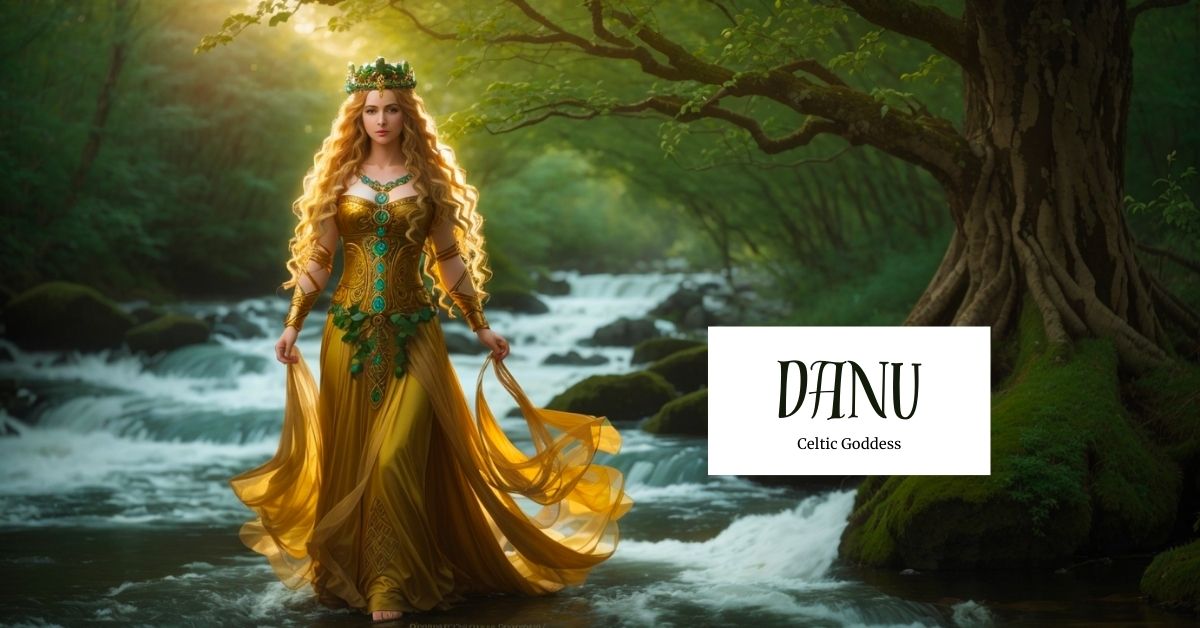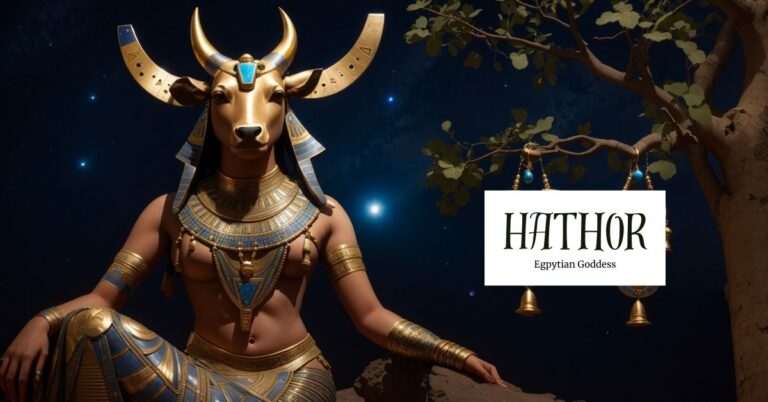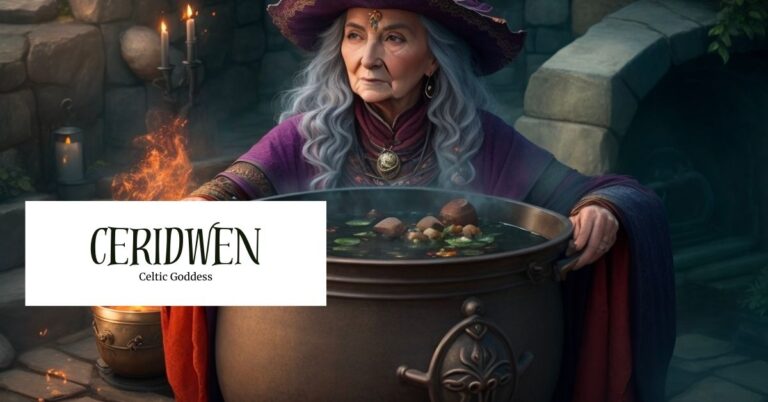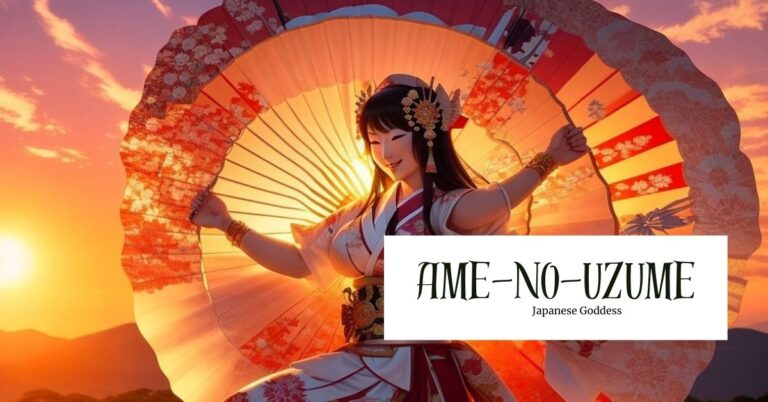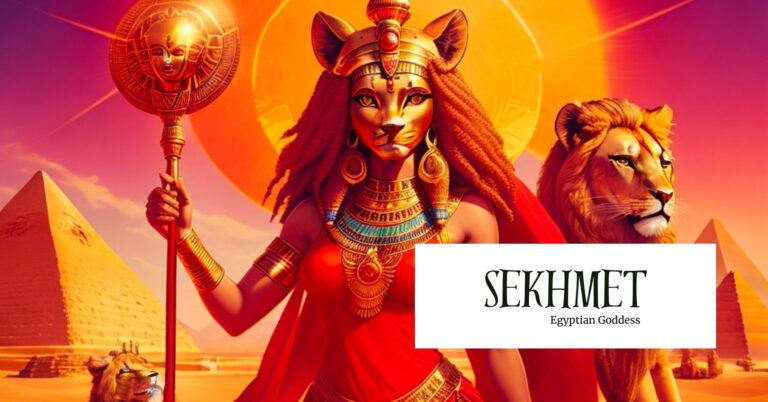Danu: Mother of all gods
Goddess Danu stands tall as a symbol of divine femininity, wisdom, and abundance. Her presence has captivated the hearts and minds of Celtic communities for centuries, as she is one of the oldest Celtic gods. To understand Goddess Danu, is to understand her origin story.
Originating from ancient Ireland, Danu’s origins are shrouded in the mists of time. Known as the “Mother of All,” she embodies the very essence of life and fertility. The Celtic people held her in high regard as the progenitor of the Tuatha Dé Danann, a mythical race of gods and goddesses who ruled over Ireland before the arrival of humans. Danu is the nurturing and protective qualities often associated with motherhood, while also captivating the power and wisdom.
Overview
Goddess Danu possesses a nature that embodies divine femininity and wisdom. Derived from ancient Irish folklore and oral traditions, her stories and associations have been passed down through generations, forming a rich tapestry of beliefs and reverence.
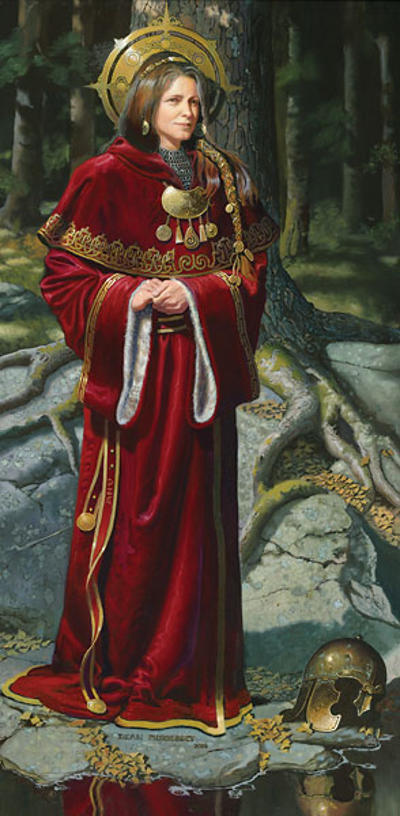
Source: Picture This Gallery
Danu is associated with nature and fertility, symbolizing the earth’s plenty and its life-giving qualities. Her name derives from the ancient Irish word “dan,” coming from meanings of art, skill, poetry, and wisdom. This highlights her deep connection to creative inspiration and intellectual prowess. One of Danu’s most significant legends revolves around her role as the creator of the Tuatha Dé Danann. They are known as a mythical race of gods and goddesses who ruled over Ireland before the arrival of humans.
Titles
- Mother of the Irish Gods
- Beantuathach
- Anu
- Dana
Abilites
As a powerful earth goddess, Danu possesses the ability to manipulate and control the elements of the earth. She can shape the land, summon and control natural forces such as storms and earthquakes, and communicate with the spirits of nature. Danu is known as a goddess of wisdom and possesses profound knowledge of the natural world. She is a source of guidance, offering insight and enlightenment to those who seek her.
Similar to the goddess Brigid, Danu is associated with the arts, poetry and inspiration. She gave creative gifts upon poets, musicians, and artists, infusing their work with beauty and eloquence. As the Celtic Goddess of Nature, Danu holds the power to bless and nurture the fertility of the land, animals, and people. She ensures the bountiful harvests, the growth of forests, and the prosperity of all living beings.
Danu’s close connection to nature allows her to communicate with animals, plants, and elemental beings. She can commune with the spirits of the land and keep a harmonious relationship with the natural world. Danu possesses the ability to heal and restore balance to the natural environment and living beings. She can cleanse and purify, bringing renewal and rejuvenation to the Earth. Known as the “Mother of All,” Danu is the nurturing and protective qualities of motherhood. She offers her love, care, and protection to her worshipers, guiding and shielding them in times of need.
Characteristics
Goddess Danu embodies two contrasting aspects that epitomize her complex personality. On one hand, she exudes the essence of a nurturing, mother figure, overflowing with boundless love, wisdom, and protective instincts. As the “Mother of All,” she cradles the world in her tender embrace, offering solace, guidance, and sustenance to her children. Her gentle presence brings forth a sense of comfort and reassurance.
However, within the depths of her being lies another facet, that of a malevolent warrior goddess. Just as nature can be both nurturing and fierce, Danu possesses an undeniable strength and formidable power that can be unleashed when provoked or threatened. Like a tempestuous storm, her wrath can shake the very foundations of existence, unleashing forces of destruction upon those who dare to challenge her.
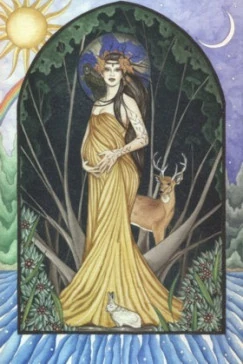
Source: The Demonic Paradise
Traits
With an aura of timeless beauty, she stands tall and graceful, her form radiant with an otherworldly glow. Her countenance emanates both serenity and strength, commanding respect and admiration from all who behold her.
Danu’s long, flowing hair cascades like shimmering strands of gold, entwined with delicate wildflowers and verdant leaves, symbolizing her deep connection to the natural world. Her eyes, as clear and deep as crystal pools, sparkle with wisdom and secrets of the universe, revealing an ancient knowledge that spans beyond mortal comprehension.
Draped in a flowing gown made of the finest silken fabric, woven with intricate patterns of swirling vines and blooming flowers, she exudes an air of regality and grace. Upon her brow, she wears a crown of woven branches, with blossoms and leaves, symbolizing her status as the Celtic Goddess of Nature. It bestows upon her an earthly majesty, further accentuating her connection with the natural world.
Symbols
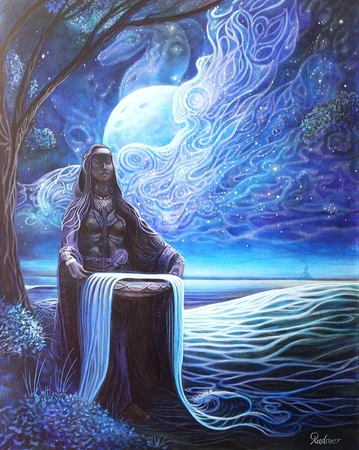
Source: Mythus
A few symbols match with the mother goddess that compliment her powerful abilities. One of her most prominent symbols is the representation of the earth itself, symbolizing her role as the goddess of fertility and the provider of sustenance. This symbol often takes the form of a lush, fertile landscape, brimming with vibrant flora and overflowing with abundant harvests.
Another symbol associated with Danu is the flowing river, representing the water goddess’ life-giving force and the continuous cycle of fertility. The rivers intertwine with her essence, embodying the constant flow of abundance and prosperity that springs forth from her divine presence. These rivers symbolize the lifeblood of the land, sustaining the growth of crops, the vitality of animals, and the well-being of the people.
The Paps of Anu in Kerry, Ireland, hold a special association with Goddess Danu, serving as a sacred place that symbolizes her presence and connection to the land. These twin peaks, also known as the “Breasts of Danu,” embody her nurturing and life-giving qualities, reminiscent of a mother’s protective embrace. The Paps of Anu stand as a physical representation of Danu’s power, fertility, and the profound connection she shares with the natural world.
Festivals and Rituals
The worship of Goddess Danu in Celtic culture is intertwined with festivals and rituals that honor her as the Celtic Goddess of Nature and the provider of abundance. These celebrations are marked by offerings, fire rituals, and connections to other significant festivals, particularly the festival of Goddess Brigid, Imbolc.
One common ritual associated with Danu involves the scattering of offerings along rivers. These offerings typically consist of flowers and blossoms that are in season, reflecting the cyclical nature of the land’s fertility. Offerings may include timbers or precious metals, representing the appreciation and reverence for the gifts bestowed by the goddess.
Danu is celebrated during ancient fire festivals that mark the transitions between seasons, such as Beltane and Samhain. These festivals often involve bonfires that symbolize purification, transformation, and the renewal of life. The fires serve as a means of honoring Danu’s presence and seeking her blessings for the upcoming seasons, whether it be the blossoming of spring or the harvest of autumn.
Legends Associated with Danu
There is not much written about the mother goddess and most of her tales were shared through word of mouth. Most of what we know about her is through the origin stories of other Celtic and Irish myths.
Origin Story
The origin story of Goddess Danu is mostly passed down orally and not much is written about her unless included in another Celtic myth. As a member of the Tuatha Dé Danann, alongside goddesses such as Brigid and Morrigan, Danu’s significance in Celtic mythology dates back to ancient times. The root of her name, “dan,” carries the connotations of art, skill, poetry, and wisdom in the ancient Irish language, signifying her association with these qualities. Danu’s story is intertwined with two notable male deities, Dagda and Bile, who are often associated with her as lovers or consorts.
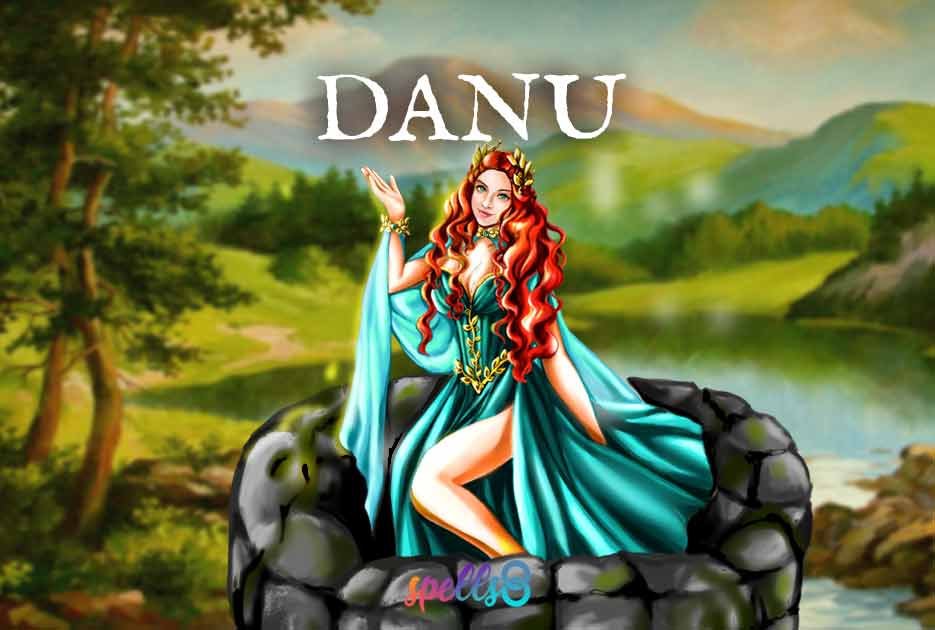
Source: Spells
Being one of the oldest Celtic goddesses, Danu holds a prominent place as a mother goddess. This aspect of her persona evokes nurturing and protective qualities, embodying the primal force of creation and the generative power of the Earth itself.
Through her name, her affiliations with the Tuatha Dé Danann, and her role as a mother goddess, the origin story of Goddess Danu encapsulates the essence of ancient Irish culture. This brings notice to her importance as a source of artistic inspiration, wisdom, and divine femininity within Celtic mythology.
Bile: the God of Light and Healing
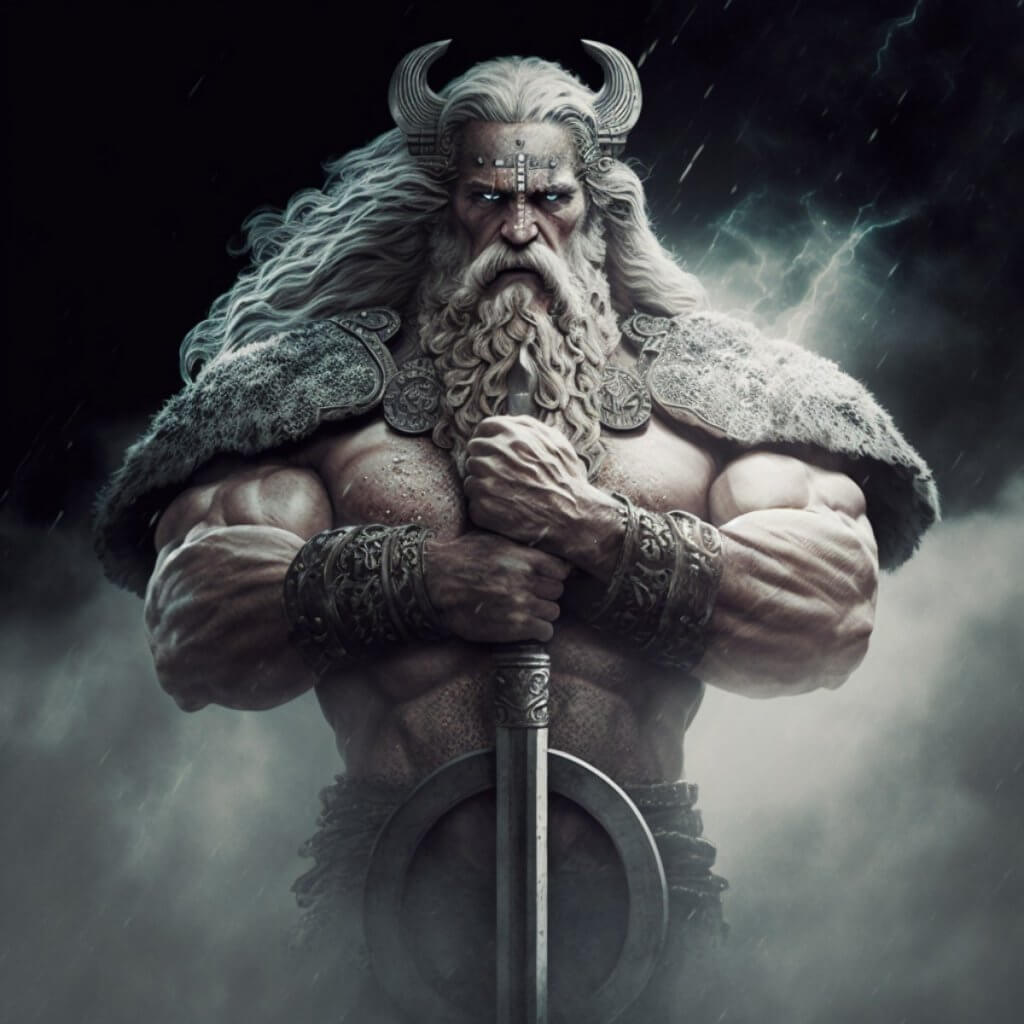
Source: Ireland Wide
In the realm fairy folk and of Celtic mythology, there exists a captivating legend that intertwines the divine figures of Goddess Danu and Bile, the god of light and healing. According to ancient tales passed down through generations, Bile was represented as a sacred oak tree, standing tall and magnificent in the heart of a lush forest.
Bile’s existence was intimately entwined with Danu, the nurturing and bountiful goddess of the land. She lovingly tended to the oak tree, providing sustenance and care, allowing it to grow in strength and vitality. Their union symbolized the balance between the masculine and feminine energies, as Bile’s light and healing powers complemented Danu’s nurturing and life-giving qualities.
From their sacred connection, a divine child was conceived and brought into the world. This child was named Daghdha, a figure of great strength and stability, who embodied the union of his parents’ attributes. The nurturing nature of Danu’s land nurtured Daghdha, imbuing him with wisdom, vitality, and the ability to bring healing to those in need. As the legend unfolds, it becomes clear that the interdependence between Bile and Danu was essential for the flourishing of Daghdha.
The River Danube
Deep within Celtic folklore, there exists a timeless legend that weaves together the mystic tapestry of Goddess Danu and the mighty Danube River. The legend tells of a profound connection between Danu, the revered deity of the Celts, and the majestic river that bears her name.
As the Celtic tribes ventured across the lands, following the course of the Danube River during their migrations, they encountered its powerful currents and witnessed the abundant life it sustained. Danu emerged as a figure intricately intertwined with the essence of the Danube River, the great mother river.
She embodied the very spirit of the river, its ebb and flow, and the life-giving forces it carried within its depths. Some believed that the river’s name, with its Celtic or Scythian origins, held a profound connection to the ancient goddess, lending weight to the belief that Danu was not just a deity but an embodiment of the ancestral river itself.
In the ancient tales, Danu was revered as the guardian and protector of the Danube River, guiding its waters and nurturing the lands it traversed. To the Celtic tribes, Danu was a symbol of their connection to river Danube, to their ancestral lands and a reminder of their reliance on the river’s resources for survival and prosperity.
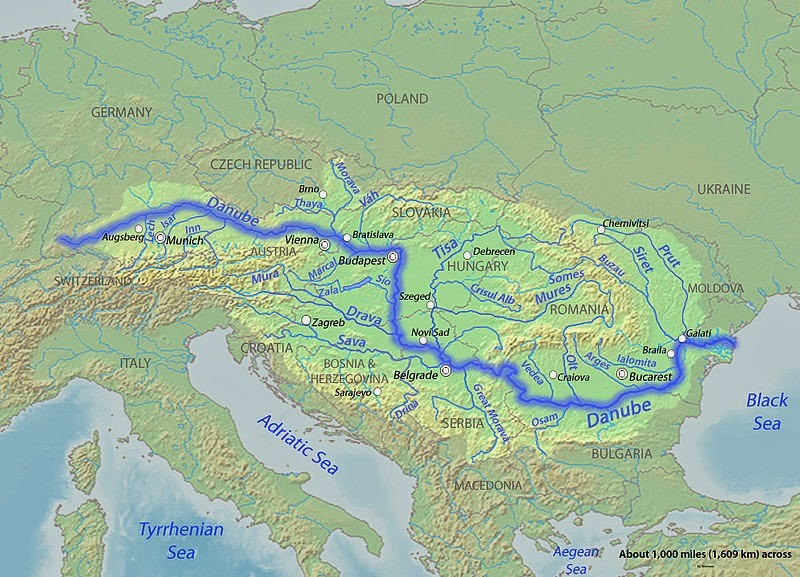
Source: Geology Page
Modern Appearances
The modern appearances of Goddess Danu span various forms of popular media, where her ancient presence continues to captivate and inspire. On the television series “Sanctuary,” Danu takes center stage as the most prominent member of the Morrigan, showcasing her power and influence. In this rendition, she demonstrates a unique ability to learn English by making physical contact with Will, a member of Sanctuary, leading to a brief yet intense connection between them.
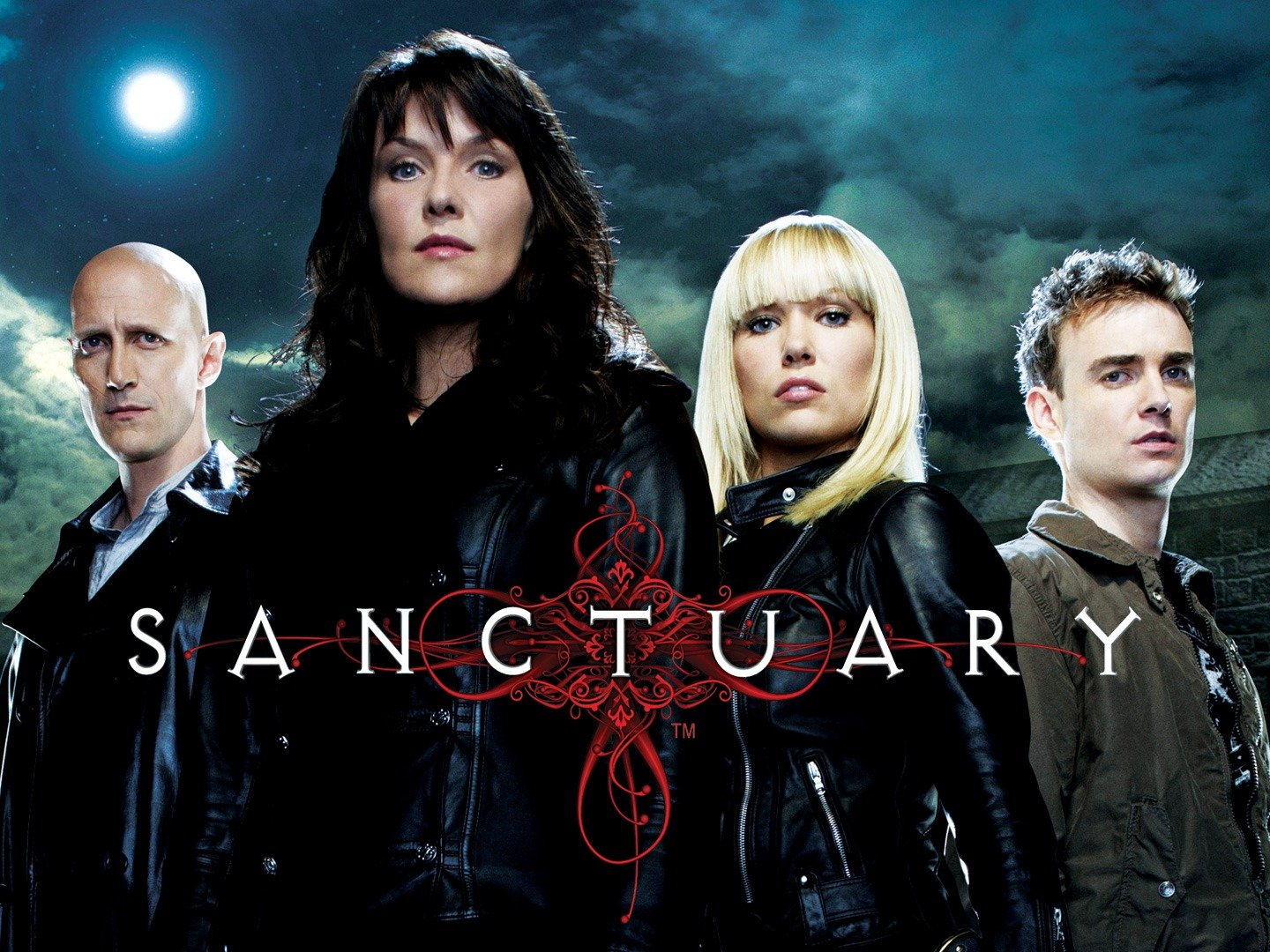
Source: Rotten Tomatoes
In the renowned comic series “Sláine” from 2000, Danu emerges as the revered mother goddess worshiped by the Sessair tribe, with the titular character Sláine being part of that tribe. Depicted as capricious and fickle, she nonetheless wages epic battles against primal forces, serving as a defender of the world of men. Meanwhile, the Irish folk band Danú takes its name as a possible reference to the mother goddess Danu and the Tuatha Dé Danann. Through their music, they pay homage to the ancient traditions and mythology of Ireland and Goddess Danu.
Final Thoughts
In the realm of Celtic mythology, the goddess Danu stands as a figure of profound significance and enduring reverence. From her origins as a nurturing mother and powerful earth goddess to her association with wisdom, poetry, and the bountiful forces of nature, Danu’s presence resonates across time and culture.
Exploration of Goddess Danu’s connection to the earth has been done in Celtic mythology and even into recent media. Looking into Danu’s myths and symbols, we glimpse the wisdom and beauty of an ancient tradition, reminding us of the power of divine femininity, the cycles of life and death, and the timeless connection between humanity and the natural world. May the stories and reverence for Goddess Danu continue to illuminate our path and deepen our appreciation for the mystical wonders that lie within and around us.
References
Bard Mythology’s | Danu | Sandy Dunlop

